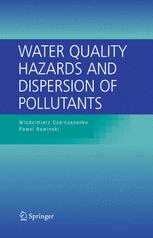

Most ebook files are in PDF format, so you can easily read them using various software such as Foxit Reader or directly on the Google Chrome browser.
Some ebook files are released by publishers in other formats such as .awz, .mobi, .epub, .fb2, etc. You may need to install specific software to read these formats on mobile/PC, such as Calibre.
Please read the tutorial at this link: https://ebookbell.com/faq
We offer FREE conversion to the popular formats you request; however, this may take some time. Therefore, right after payment, please email us, and we will try to provide the service as quickly as possible.
For some exceptional file formats or broken links (if any), please refrain from opening any disputes. Instead, email us first, and we will try to assist within a maximum of 6 hours.
EbookBell Team

5.0
30 reviewsWater resources are under stress worldwide and one of the elements of this stress - man's impact on water quality constitutes a key problem especially in well-developed countries. This problem receives an increasing attention of the public, politicians, decision makers nowadays. People have to answer how to achieve any given level and pattern of water quality in particular watercourses and also how to mitigate the catastrophes that are inseparable elements of civilization. The EU water framework directive, which came into force at the end of 2000, changes the way of monitoring, assessing and managing water in European countries. Three groups of quality elements (biological, hydromorphological and physico-chemical) have been identified in the water framework directive as necessary to classify the ecological status of a particular water body. There are however many significant shortfalls and gaps not only in the countries information but also at the basic understanding of the physical processes occurring in various water bodies and the presented volume aims at filling some of those gaps. One should also mention about other EU directives, like the dangerous substances directive, drinking water directive, IPCC directive which in general should lead towards reduction and elimination of pollution by hazardous substances, phasing out emissions, losses and discharges of them. In general achievement of levels protecting human health and aquatic ecosystems is expected.